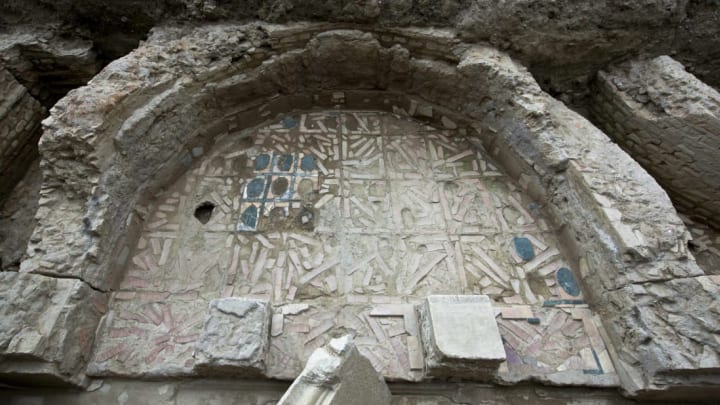The remains of what may have been one of Rome’s earliest Christian churches were accidentally discovered along the Tiber River during construction, The Local reports. The four-room structure, which could have been built as early as the 1st century CE, was unearthed by electrical technicians who were laying cables along the Ponte Milvio.

No one is sure what to make of this “archaeological enigma shrouded in mystery,” in the words of Rome’s Archaeological Superintendency. Although there’s no definitive theory as of yet, experts have a few ideas.
The use of colorful African marble for the floors and walls has led archaeologists to believe that the building probably served a prestigious—or perhaps holy—function as the villa of a noble family or as a Christian place of worship. Its proximity to an early cemetery spawned the latter theory, since it's common for churches to have mausoleums attached to them. Several tombs were found in that cemetery, including one containing the intact skeleton of a Roman man.


The walls are made of brick, and the red, green, and beige marble had been imported from Sparta (Greece), Egypt, and present-day Tunisia, The Telegraph reports.
As The Local points out, it’s not all that unusual in Rome for archaeological discoveries to be made by unsuspecting people going about their day. Rome’s oldest aqueduct was found by Metro workers, and an ancient bath house and tombs were found during construction on a new church.
[h/t The Local]
